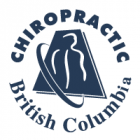
In an October 3, 2018 letter to licensed chiropractors in British Columbia Canada, the College of Chiropractors unveil their own made-up version of “evidence informed practice” under the title of an “Efficacy Claims Policy”. In a wide ranging policy statement that must be interpreted in conjunction with their Professional Conduct Handbook, Appendix N of the Handbook and the actual law itself, the College eviscerates the actual law and narrows the scope of practice to the gapping of stuck joints.
The members of the College (8 of 12 who are voted in by the membership) shroud the new policy in a “protect the public” veneer that has become the modus operandi of subluxation deniers and the Chiropractic Cartel they control.
The Policy reads:
Due to the absence of acceptable evidence supporting such claims, registrants must NOT represent to patients or the public that chiropractic:
(a) can be used to treat diseases, disorders or conditions such as: Alzheimer's disease, cancer, diabetes, infections, infertility, or Tourette's syndrome, or
(b) has any beneficial effect on childhood diseases, disorders or conditions such as: ADHD (or ADD), autism spectrum disorders including Asperger syndrome, cerebral palsy, Down syndrome, fetal alcohol syndrome, or developmental and speech disorders.
The above list of diseases, disorders or conditions is neither final nor conclusive. Absent acceptable evidence, registrants are not free to make claims about the effectiveness of chiropractic in treating a disorder, disease or condition simply because it is not included in the list.
Note especially the use of the words: any beneficial effect.
CLICK HERE for the GCC statement
The College of Chiropractors' Policy falls apart upon even a cursory inspection since:
- Chiropractor managing subluxation aren't generally treating any disease except vertebral subluxation
- People undergoing management for vertebral subluxation experience secondary health benefits – including many on their list.
Of course the College doesn’t leave it at their short list of named conditions adding that its “… Neither final nor conclusive” and give a stern warning to anyone who thinks they will find a way around it.
“. . . registrants are not free to make claims about the effectiveness of chiropractic in treating a disorder, disease or condition simply because it is not included in the list.”
The College, wrapping their coup in the guise of protecting the public, wildly distorts the concept and definitions of evidence informed practice and engages in series of logical fallacies stating:
“The position of the College of Chiropractors of BC (the “CCBC”), in alignment with the Ministry of Health and other regulated health professionals, is solidly on the side of evidence-informed healthcare.”
Such a claim assumes that the College has actually adopted a policy consistent with the model of evidence informed practice – which it has not.
Evidence informed practice involves considering all available scientific evidence, the clinical circumstances of the patient, the patient’s values and the clinical experience of the provider. Integrating these aspects, the provider then helps the patient make a decision that is in their best interests.
Instead, the College redefines acceptable evidence by removing any type of research where there are other possible explanations for treatment outcomes, the outcomes have not been replicated across multiple studies, they are not considered higher level evidence (RCT’s), basic science studies, case studies, self-assessment studies (Quality of Life Studies) and outcomes studies.
READ THAT AGAIN.
If you have a single firing neuron in your head you understand that this means that the only evidence you can consider as a health care provider, and to which a patient is entitled to be informed about, are randomized, double blind, clinically controlled trials that have been replicated multiple times.
Not only is this absurd on its face – it’s not consistent with any aspect or definition of evidence informed practice.
The College then “suggests” that BC chiropractors consider three questions before making any claims about the benefits of treatment:
- Do the claimed benefits related to care fall within the chiropractic scope of practice?
- Are such claims accurate, verifiable, truthful and not misleading?
- Are such claims supported by acceptable evidence?
The reason for this is to hammer home the College’s notion of “acceptable evidence” because any reading of the actual law in British Columbia demonstrates its broad nature in allowing chiropractors to not only manage patients with vertebral subluxation, but to promote, maintain and restore health.
The law directs chiropractors to render “. . . advice and counseling on matters related to the condition of the spine or other joints of the body and the associated tissue, the nervous system and the overall health of the individual (emphasis added).
The actions of the College are similar (but opposite) to steps taken in the US to expand the scope of practice. Since the regulatory boards cannot simply change the scope (that takes the legislature) they promulgate rules to bypass the law and change the scope.
Same thing here in BC but in the opposite direction.
The scope in British Columbia is relatively broad so in an effort to rein in the subluxation fixers and keep chiropractic to musculoskeletal conditions only, they created a problem that didn’t exist and then enacted a policy to address it.
CLICK HERE for more on Australia
It has now spread to Canada starting with Manitoba and now British Columbia.
CLICK HERE for more on Florida situation
In the end, the licensed chiropractors in British Columbia actually elect the very Board members that are suppressing them so perhaps this suppression is exactly what the majority want.
As an interesting end note the College appears to have left intact the ability of the chiropractor to put an instrument, a device or a finger into the external ear canal for the purpose of assessing the ear and auditory systems and to put a finger into the anus.
So they have that going for them.
CLICK HERE to view the cover letter
CLICK HERE for the Board Members
